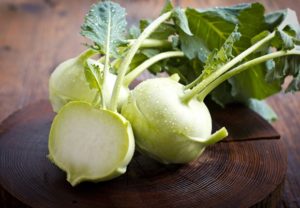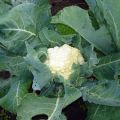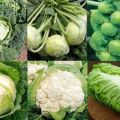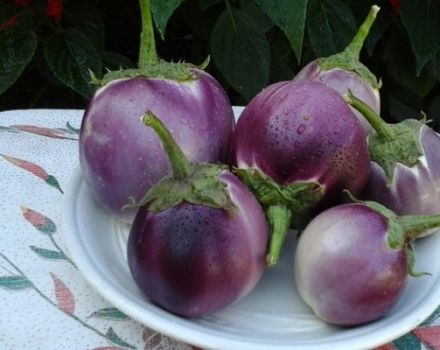Growing and caring for Japanese cabbage Little Mermaid, Mizuna and Cyclops f1
More and more vegetable crops are appearing on the seed market, whose names are causing confusion. This also happened with Japanese cabbage. So on the package with cabbage seeds "Cyclops f1" is written - Japanese line, which actually indicates not the type of cabbage, but the authorship of the Japanese company "Sakata". So white cabbage of Japanese selection is associated with buyers with one of the varieties of cabbage, called "Japanese", having nothing to do with it.
We are familiar with most varieties of cabbage that are part of the Mediterranean-European group: white cabbage, kohlrabi, Savoy, Brussels sprouts, cauliflower, broccoli. But vegetables from the East Asian group are rare guests. For the inexperienced buyer, the names of Peking, Chinese, Japanese cabbage often do not differ. Therefore they are called kale or lettuce, green mustard or green Japanese salad. Although there is no big trouble in this, because all these plants belong to the cruciferous or cabbage family.
But for gardeners who decide to plant a curiosity on their site, it is better to immediately understand the features of a salad vegetable culture. The choice is not great. On the shelves of shops there is only Japanese cabbage Mizuna, with different colors of leaves and varieties "Little Mermaid", "Dude" and "Emerald Pattern".
Japanese cabbage has a unique set of vitamins and minerals, goes well with fish, meat, complements vegetable dishes.
"Japanese woman" - a kind of collard greens
Japanese cabbage is a vegetable crop of the cruciferous family. In the process of growth, it forms a spreading leaf rosette. There are two forms of Japanese cabbage: "Mibuna", with smooth narrow lanceolate leaves and "Mizuna", the leaves of which are cut into lobes and have an uneven edge.
The plant is grown as an annual crop, but in a two-year growth cycle, cabbage forms a conical root crop with a diameter of up to 7 cm, which tastes like rutabagas. Leaves are used for food, which grow throughout the entire growing season, even after cutting.
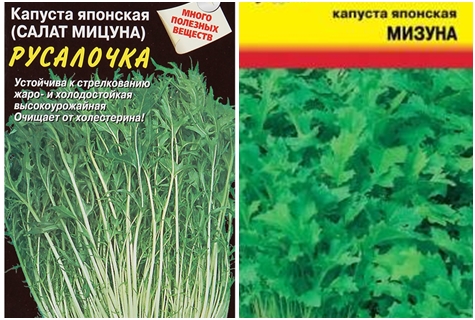
Japanese woman tastes like Chinese and Peking varieties, but contains fewer mustard oils. Due to the unusual shape of the leaf, it looks very impressive on the beds, according to the eastern tradition it is used as an ornamental plant. For Russian growing conditions, the variety of Japanese cabbage "Mermaid" is adapted.
Japanese cabbage withstands spring frosts down to -4 ° C, is unpretentious and very productive.
Japanese cabbage "Little Mermaid"
The variety of Japanese cabbage Little Mermaid is cold-resistant and can be grown outdoors without problems.
Description of the variety
This is what the main characteristics look like:
- mid-season variety, with a growth duration of 55-70 days before the first collection of greens;
- due to the large number of awakened apical buds, it forms a spreading leaf rosette of 45-60 leaves;
- leaves are smooth or slightly wrinkled, green in color with a white thin petiole, dissected into lobes, lyre-pinnate with a serrated edge;
- leaf rosette horizontal or slightly raised about 40 cm high, up to 75 cm in diameter;
- the taste of the leaves is pleasant, delicate, with a slight mustard accent for salad purposes;
- plant weight 1-1.7 kg, per square meter of plantings, you can get 5-6.5 kg of greenery during the growth period;
- the variety tolerates heat well, is resistant to flowering.
The merits of the "Little Mermaid" include high yield. After cutting the leaves, fresh foliage grows from the newly awakened buds. This allows you to get greens from spring to late autumn. The variety is unpretentious, resistant to adverse environmental conditions, cold-resistant, heat-resistant.
Japanese cabbage is used as an ornamental plant for decorating flower beds, alpine hills, as borders.
Features of variety care
The plant is extremely unpretentious, growing and caring for it does not take much time.
- The variety can be grown both by seedlings and by sowing in open ground.
- Seeds germinate at 3-5 degrees. The seedlings are resistant to short-term spring frosts. The plant develops best at temperatures of 18-20 degrees.
- To obtain early greenery, planting is carried out at several times, starting in early spring, from April 20 to September 1. In protected ground, plants are planted according to the 20 x 15 x 20 pattern, or with ribbons as a seal to the main crops.
- In open ground, plants are planted on standard ridges according to a 25 x 1 cm pattern or with lowercase ribbons, but leaving a distance of 40 cm between the lines, and up to 60 cm between the ribbons.
- Well-heated areas with little shading are suitable for the culture. Soils are preferable fertile, well moistened, with a high content of organic and mineral fertilizers.
- It is not advisable to plant the plant in areas where representatives of the cruciferous family previously grew. Best predecessors: legumes, nightshades, perennial herbs, cucumbers, onions.
- Seed germination is expected in 3-4 days. As it grows, with the appearance of 3-4 true leaves, the thickened areas of crops are thinned out.
- Further care comes down to moderate watering, loosening the soil and weeding. Like all types of cruciferous plants, "Japanese" loves moisture, but is afraid of too much waterlogging of the soil.
- You should not overuse dressings either. It is enough that it was brought in for digging before planting. If necessary, carry out no more than two supporting dressings. The plant is prone to the accumulation of nitrates, so it is necessary to limit the content of nitrogen fertilizers in the soil.
- It is important to cut the leaves on time, allowing young shoots to grow. Indeed, the plant has a huge potential in the form of 18-40 buds of resumption of growth.

Japanese cabbage with a pleasant refreshing taste is suitable for the very first vitamin salads of the season, being a real storehouse of nutrients. It complements meat and fish dishes well, goes well with some types of cheese.
Due to its light peppery aroma, it is added to add a savory taste to stews, soups, marinades, pickles.
An unusual vegetable crop is also distinguished by its decorative appeal. It can be grown as a curb along a garden path. With its elegant greenery, the plant will emphasize simpler and taller crops. Cabbage "Little Mermaid" will perfectly complement the set of spicy plants and vitamin salads on any site, decorating it with its beautiful foliage.

